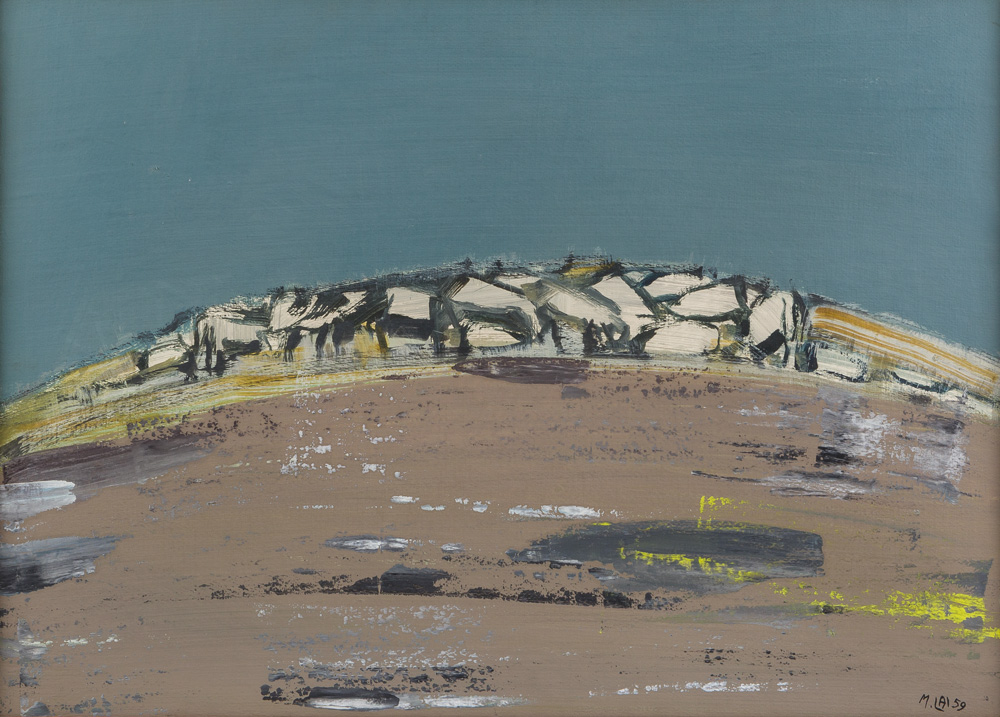Maria Lai. A Journey to America
Elisabetta Masala
In Cold Spring, New York, there is a museum and research center unlike any other, dedicated to Italian art from the postwar period to the present. Designed by architect Miguel Quismondo and nestled in the landscape of the Hudson Valley, Magazzino Italian Art is not only a place where nature and art engage in dialogue, but also an international landmark for Arte Povera, housing one of the world’s largest and most comprehensive collections of the movement.
It is here that the first major American retrospective dedicated to Maria Lai is being held, titled Maria Lai: A Journey to America. On view through July 28, 2025, the exhibition brings together around one hundred works from American collections and Italian institutions, with the aim of tracing the artist’s entire career—from her early figurative works of the 1950s to her textile and relational installations of the 2000s. It is an extraordinary body of work, which includes several pieces never before exhibited.
MAN museum is participating in the exhibition, curated by Paola Mura, with three works from its permanent collection: Ovile (1959), Tela cucita (1975), and Geografia (1986). Positioned at key moments in the exhibition, these works mark crucial phases in Maria Lai’s artistic journey: her deep connection to Sardinian culture, her departure from figuration, and the development of a textile and abstract language capable of evoking memories, myths, and inner geographies.
The exhibition opens with a section focused on Lai’s formative years and the influence of the Sardinian landscape and culture, followed by her move to Rome and her engagement with Arte Povera and the international art scene. In Ovile, one of the works from MAN’s collection, the formal and narrative synthesis that would later characterize her 1960s turning point is already evident. After a long period of retreat, Lai gradually abandoned painting to develop a new language made of humble materials—threads, stitching, paper, fabrics. It was in this context that her Telai (Looms), Tele cucite (Sewn Canvases), and Geografie(Geographies) were born—works that transform artistic practice into poetic expression, including the standout Tela cucita and Geografia from the MAN collection.
As part of its cultural programming, Magazzino Italian Art organized an international symposium that brought together scholars and artists to reflect on Maria Lai’s legacy and the significance of her work in contemporary art. The Maria Lai Symposium, held at the museum, highlighted the poetic radicalism of Lai’s practice through contributions from Alessandro Giammei (Yale University), Michele D’Aurizio (University of California, Berkeley), and Saskia Verlaan (CUNY Graduate Center, New York).
This exhibition also stands as a virtuous example of international collaboration among museums, foundations, and both public and private collections. The loans from Italy—including those from MAN—demonstrate the essential role museums play in making cultural heritage accessible, promoting the understanding of key figures in Italian art, and fostering intercultural dialogue that transcends geographic boundaries. Maria Lai: A Journey to America is not merely a retrospective—it is a journey that continues to connect communities and generations through a poetic and universal vision.

